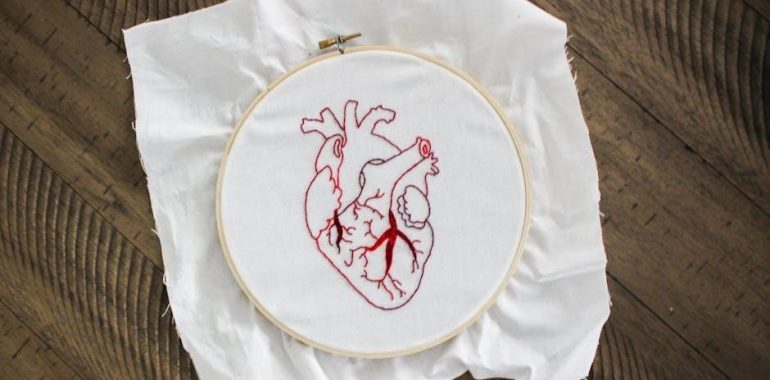pdf cross stitch charts

pdf cross stitch charts
PDF cross stitch charts are digital patterns that simplify embroidery. Popular tools like PCStitch and FlossCross enable easy creation from images. These eco-friendly, customizable charts offer clear stitching guides and vibrant color options, making them a favorite among crafters worldwide.
What Are PDF Cross Stitch Charts?
PDF cross stitch charts are digital patterns that provide a visual guide for embroidery projects. They are created using software like PCStitch or FlossCross, converting images into stitchable designs. These charts include color codes, stitch counts, and Grid layouts. PDFs are customizable, allowing adjustments in size and floss types. They are eco-friendly alternatives to paper charts and can be easily shared or printed. Ideal for crafters, PDF charts ensure precise stitching and vibrant results, making them a popular choice for both beginners and experienced embroiderers alike.
Why Use PDF Charts for Cross Stitch?
PDF charts offer convenience, customization, and eco-friendliness. They provide clear stitching guides and vibrant color codes, enhancing accuracy. PDFs are easily shareable, printable, and accessible on digital devices. Customization options allow adjusting stitch counts and floss types. They reduce paper waste, making them a sustainable choice. PDFs are cost-effective and storage-efficient, ideal for crafters. Their versatility and clarity make them a preferred choice for both beginners and experienced embroiderers, ensuring precise and enjoyable stitching experiences.
Popular Tools for Creating PDF Charts
Popular tools for creating PDF cross stitch charts include PCStitch, FlossCross, and Pic2Pat. PCStitch is a user-friendly software for designing custom patterns, while FlossCross allows easy import of images to create charts. Pic2Pat simplifies the process by converting images into stitch patterns. These tools offer features like color customization, stitch count adjustment, and direct PDF export, making them ideal for both beginners and experienced crafters. They streamline the design process, ensuring high-quality, printable charts for embroidery projects.

How to Create PDF Cross Stitch Charts
Creating PDF cross stitch charts involves converting images into patterns using tools like PCStitch or FlossCross, adjusting settings, and exporting designs as PDF files for easy printing.
Step-by-Step Guide to Making a Cross Stitch Pattern
To create a cross stitch pattern, start by selecting an image or design. Use software like PCStitch or FlossCross to import the image and adjust settings such as stitch count and color palette. The software will convert the image into a grid pattern, mapping colors to embroidery floss. Once satisfied, export the design as a PDF for easy sharing and printing. This process ensures clarity and accuracy, making it simple for crafters to follow the pattern and bring their projects to life.
How to Convert an Image into a Cross Stitch Chart
Converting an image into a cross stitch chart involves selecting the image and importing it into pattern-making software like PCStitch or FlossCross. The software processes the image, mapping colors to embroidery floss and generating a grid-based stitch pattern. Users can adjust settings such as stitch count, color palette, and fabric type to customize the chart. Once satisfied, the pattern is exported as a PDF, ready for printing or digital sharing. This method ensures precise and visually appealing cross stitch designs tailored to individual preferences.
Using Software Like PCStitch or FlossCross
Software like PCStitch or FlossCross simplifies creating cross stitch charts. These tools allow users to import images, map colors to embroidery floss, and generate stitch patterns. PCStitch offers a user-friendly interface for designing patterns, while FlossCross supports direct photo-to-chart conversion. Both programs enable customization of stitch counts, fabric types, and color palettes. They also provide features like grid adjustments and floss recommendations, ensuring precise and professional results. Exporting designs as PDFs makes sharing and printing easy, catering to both beginners and experienced crafters.
Best Practices for Designing Printable Charts
When designing printable PDF cross stitch charts, clarity and readability are key. Use high-contrast colors for symbols and grids to ensure visibility. Maintain consistent spacing between stitches and ensure the grid aligns properly. Include a legend for symbols and floss colors for easy reference. Optimize the PDF for printing by selecting standard paper sizes and ensuring the pattern fits without scaling. Add page numbers and a title for organization. Avoid overly complex designs that may confuse stitchers. Test the chart by printing it before sharing to ensure accuracy and readability.

Benefits of Digital Cross Stitch Charts
Digital PDF charts offer eco-friendly, customizable, and easily accessible stitching guides. They reduce paper waste, allow for instant sharing, and provide backup options, enhancing the stitching experience;
Advantages of PDF Files Over Paper Charts
PDF cross stitch charts offer unmatched convenience and versatility; They are easily accessible on multiple devices, eliminating the need for physical storage. Customizable settings allow users to adjust colors, sizes, and details. PDFs reduce environmental impact by minimizing paper use and enabling digital sharing. They also provide backup options, preventing loss of patterns. Additionally, PDFs support collaboration, making it simple to share and edit designs. These features enhance the stitching experience, offering flexibility and sustainability that paper charts cannot match, while maintaining high-quality visual clarity for precise stitching guidance.
Customization Options in Digital Charts
Digital PDF charts offer extensive customization, allowing crafters to tailor patterns to their preferences. Users can adjust stitch counts, pattern sizes, and color palettes to suit their projects. Personalized notes and unique symbols can be added for clarity. Tools like PCStitch and FlossCross enable importing images to create bespoke designs. Crafters can choose from various floss types and brands, ensuring a perfect match for their materials. These options empower creators to craft truly personalized and visually appealing cross stitch projects with ease and precision, enhancing the overall stitching experience.
Environmental Impact of Digital Patterns
Digital PDF cross stitch charts significantly reduce the need for paper, minimizing environmental impact. By eliminating physical printing, crafters conserve resources and lower carbon emissions. Digital storage and sharing via email or cloud platforms further reduce waste. Additionally, reusable and editable patterns decrease the demand for ink and physical materials. This shift toward digital crafting promotes sustainability, making it easier for hobbyists to embrace eco-friendly practices while enjoying their creative pursuits.

How to Export Cross Stitch Charts to PDF
Exporting cross stitch charts to PDF ensures high-quality, readable patterns. Use software like PCStitch or online converters to transform images or designs into PDF format easily.
Exporting Patterns from PCStitch
PCStitch is a popular tool for creating and exporting cross stitch charts to PDF. To export, open your design, navigate to the print menu, and select “Print to PDF.” This option generates a high-quality, readable pattern with clear symbols and color codes. The PDF retains all design details, making it ideal for sharing or printing. Ensure your settings match your stitching needs for the best results. This method is quick, efficient, and ensures your patterns are professionally formatted for any crafting project.
Converting JPEG to PDF for Cross Stitch
Converting a JPEG image to a PDF for cross stitch is straightforward. Upload the image to software like PCStitch or FlossCross, adjust settings for stitch count and colors, and export as a PDF. This format ensures sharp, readable patterns with clear symbols and color codes. PDFs are ideal for sharing and printing, maintaining high quality. The process preserves design details, making it perfect for crafting projects. This method is efficient and ensures your cross stitch patterns are professionally formatted and easy to follow.
Printing to PDF: A Simple Guide
Printing cross stitch patterns to PDF is a seamless process. Use software like PCStitch or FlossCross to design your chart, then select the print option and choose “Save as PDF.” This ensures high-quality, scalable patterns. Adjust settings for margins, paper size, and orientation to fit your needs. The PDF format retains clarity and detail, making it ideal for sharing or printing. This method is eco-friendly and convenient, allowing you to access your patterns digitally without losing quality. It’s a practical solution for crafters seeking professional-grade results.

Tutorials and Guides for PDF Charts
Find tutorials on converting images to cross stitch patterns using tools like PCStitch or FlossCross. Guides cover PDF creation, customization, and troubleshooting for perfect digital charts.
How to Create a Digital Chart from a PDF/JPG
Converting a PDF or JPG into a digital cross stitch chart involves importing the image into software like PCStitch or FlossCross. Adjust settings such as stitch count and colors to match your design. Once satisfied, export the pattern as a PDF. Ensure the chart is clear and includes a legend for floss colors. For JPGs, use photo editing tools to enhance quality before conversion. This method allows for easy customization and sharing of your patterns digitally.
Video Tutorials for Converting Images to Patterns
Video tutorials provide step-by-step guidance on converting images to cross stitch patterns. Platforms like YouTube offer detailed lessons on using tools like PCStitch and FlossCross. These tutorials cover importing images, adjusting settings, and exporting PDFs. They also demonstrate how to enhance photo quality for better pattern results. Beginners can learn to create custom charts efficiently, ensuring their designs are clear and stitch-friendly. These resources help crafters master digital pattern creation, making the process accessible and enjoyable for all skill levels, from novice to advanced stitchers aiming for professional-quality designs.
Step-by-Step Instructions for Beginners
Beginners can create PDF cross stitch charts by following simple steps. Start by selecting a tool like PCStitch or FlossCross. Import your chosen image, then adjust settings like stitch count and color palette. Once satisfied, export the pattern as a PDF. These tools guide you through each step, ensuring your chart is clear and ready to stitch. This method allows even newcomers to craft professional-looking patterns with ease, making digital cross stitching accessible to everyone.

Customizing Your PDF Cross Stitch Charts
Select colors, adjust stitch counts, and personalize symbols to tailor your PDF charts. Tools like PCStitch and FlossCross allow easy customization, ensuring unique and visually appealing designs.
Choosing Colors and Floss Types
Selecting the right colors and floss types enhances your cross stitch design. Popular brands like DMC, Anchor, and Madeira Mouline offer a wide range of shades. Tools like FlossCross allow you to preview colors before stitching, ensuring a perfect match. Consider the fabric type and lighting when choosing hues; Experiment with metallic or variegated floss for unique effects. Proper color selection ensures your PDF chart translates beautifully into a finished piece, making your embroidery stand out with vibrant, professional results.
Adjusting Stitch Count and Pattern Size
Adjusting stitch count and pattern size is crucial for achieving the desired design. Tools like PCStitch and FlossCross allow users to modify these settings easily. Increasing stitch count enhances detail, while reducing it simplifies the pattern. Resizing the design ensures it fits your fabric and thread preferences. Proper scaling maintains clarity and stitching ease. Experimenting with these adjustments helps create customized, visually appealing charts. This feature is especially useful for adapting patterns to different fabric types or personal stitching preferences, ensuring a seamless crafting experience for all skill levels.
Adding Personalized Notes and Symbols
Enhance your PDF cross stitch charts by adding personalized notes and symbols. Tools like PCStitch and FlossCross allow users to incorporate custom annotations, such as stitching tips or fabric recommendations. Symbols can highlight special stitches or color changes, improving pattern clarity. Adding a personal touch, like a name or date, makes the chart unique. These features ensure charts are both functional and visually appealing, catering to individual preferences and project requirements. This customization option elevates the chart’s utility and aesthetic appeal for crafters of all levels.

Common Mistakes to Avoid
Common errors include incorrect color codes, mismatched fabric sizes, and improper scaling. Ensure accurate stitch counts and verify PDF settings before printing to avoid pattern discrepancies.
Errors in Converting Images to Patterns
Common mistakes include poor image quality and incorrect color palettes. Low-resolution images can result in unclear patterns, while mismatched colors may lead to inaccurate stitching. Ensure high-resolution images and precise color matching. Incorrect stitch counts and fabric size mismatches are also frequent issues. Use software tools to adjust settings carefully and preview patterns before finalizing. Proper calibration of colors and stitch counts ensures professional results. Avoiding these errors requires attention to detail and thorough testing of the pattern before printing or sharing.
Common Issues with PDF Export
When exporting cross stitch charts to PDF, issues like incorrect settings or missing elements can occur. Ensure proper resolution and color accuracy to maintain pattern clarity. Sometimes, charts may not scale correctly or symbols might not display properly. Verify that all stitching symbols and colors are embedded in the PDF. Additionally, compatibility issues with different PDF viewers can affect readability. Always test the PDF on multiple devices to ensure consistency. Adjusting export settings and previewing the file before finalizing can help prevent these common problems and ensure a professional-quality chart.
Troubleshooting Tips for Digital Charts
Encounter issues with blurry images? Increase the DPI settings when exporting to PDF. Missing symbols or colors? Ensure all elements are embedded during export. Colors not matching? Check your color profile settings. For scaling problems, verify the pattern size matches your fabric count. If symbols are unclear, adjust the PDF viewer settings or zoom in. Test the PDF on multiple devices to ensure consistency. Always preview the file before sharing or printing to catch errors early. These steps help resolve common issues and ensure your digital charts are clear and stitch-ready.

Advanced Tips for Creating Professional Charts
Use grid alignment for symmetry, optimize color palettes for visual appeal, and ensure patterns are scalable. Advanced tools like PCStitch refine details, enhancing readability and professional finish.
Using Grids and Symmetry in Designs
Grids and symmetry are essential for creating balanced cross stitch charts. A grid system helps align stitches accurately, ensuring patterns are even and readable. Symmetry enhances visual appeal, making designs more professional. Tools like PCStitch allow precise grid customization, while symmetry features simplify mirroring and repeating motifs. Proper alignment prevents misstitches, while balanced compositions make charts visually engaging. These techniques are crucial for both beginners and advanced designers, ensuring professional-looking results in PDF cross stitch charts.
Optimizing Patterns for Readability
Optimizing cross stitch patterns for readability ensures a seamless stitching experience. Clear grid lines, distinct color coding, and adequate spacing between symbols are key. High-contrast colors enhance visibility, while consistent symbol placement reduces confusion. Tools like PCStitch and FlossCross offer features to adjust font sizes and zoom levels, making patterns easy to follow. Proper organization of legend and floss lists further improves clarity. These optimizations ensure that stitchers can focus on their craft without unnecessary frustration, making PDF charts user-friendly for all skill levels and preferences.
Advanced Color Management Techniques
Advanced color management techniques enhance the visual appeal and accuracy of PDF cross stitch charts. Tools like PCStitch and FlossCross allow for precise color customization, enabling designers to match floss colors accurately. Techniques include adjusting color palettes, blending shades, and ensuring high contrast for visibility. Importing images and converting them to stitchable patterns with customizable color options is also possible. These methods ensure that designs are both aesthetically pleasing and easy to follow, making professional-grade charts accessible to crafters of all levels. Proper color management is essential for creating visually stunning and professional patterns.

Platforms and Communities for PDF Charts
Online marketplaces like Etsy and specialized communities on Reddit offer spaces to share and sell PDF cross stitch patterns. These platforms foster collaboration and support among designers.
Popular Online Communities for Cross Stitch
Online communities like Reddit’s r/crossstitch and Facebook groups dedicated to embroidery provide spaces for sharing PDF patterns, tips, and inspiration. These platforms connect crafters globally, fostering collaboration and creativity. Members often exchange ideas, showcase projects, and recommend tools for creating and editing digital charts. Additionally, specialized forums and social media groups offer tutorials and support for both beginners and advanced stitchers, making them invaluable resources for the cross stitch community.
Marketplaces for Selling PDF Patterns
Popular platforms like Etsy and Creative Market allow crafters to sell PDF cross stitch charts globally. These marketplaces offer a vast audience and easy-to-use interfaces. Creators can upload their designs, set prices, and manage sales effortlessly. Additionally, specialized craft stores and independent websites cater to embroidery enthusiasts. Sellers benefit from built-in customer bases and secure payment systems. To succeed, ensure high-quality visuals and detailed descriptions. Platforms like Redbubble also support selling digital patterns, making it easier than ever to share and monetize your cross stitch creations. Start your digital craft shop today and reach stitchers worldwide.
Collaborative Tools for Designers
Collaborative tools empower designers to work together on PDF cross stitch charts seamlessly. Software like PCStitch and FlossCross offers features for shared projects, enabling multiple users to edit and refine patterns in real time. Cloud-based platforms allow teams to access and modify designs from anywhere, ensuring consistency and efficiency. Version control features help track changes, preventing errors and enhancing creativity. These tools also support shared libraries of stitches and colors, fostering teamwork and innovation. By leveraging these collaborative solutions, designers can create intricate, professional charts with ease and precision, regardless of location.
Future Trends in Cross Stitch Chart Design
Future trends include AI-driven pattern creation, augmented reality guides, and machine learning for custom designs, enhancing accessibility and creativity in digital cross stitch crafting.
AI and Machine Learning in Pattern Creation
AI and machine learning are revolutionizing cross stitch design by automating pattern creation. Algorithms analyze images, optimizing color selection and stitch counts for precise results. These tools enable quick adjustments, ensuring designs are both visually appealing and stitch-friendly. Additionally, AI can suggest alternative colors or patterns, enhancing creativity without manual effort. This technology streamlines the design process, making it accessible to crafters of all skill levels while maintaining high-quality outputs. AI’s role in cross stitch is set to expand, offering endless possibilities for innovative designs;
Augmented Reality for Stitching Guides
Augmented reality (AR) is transforming cross stitch by providing interactive stitching guides. AR overlays digital patterns onto fabric, helping crafters accurately place stitches and track progress in real time. This technology enhances precision, reducing errors and boosting creativity. AR also offers virtual tutorials, teaching techniques like threading and knotting. By blending digital and physical crafting, AR makes cross stitch more accessible and engaging, especially for newcomers. This innovative approach is set to redefine how patterns are used, offering a modern twist to traditional embroidery. AR is a game-changer for cross stitch enthusiasts worldwide.
Sustainability in Digital Crafting
Digital cross stitch charts promote sustainability by reducing paper waste. PDF patterns eliminate the need for physical materials, conserving resources and minimizing environmental impact. They also allow crafters to print only necessary sections, reducing excess paper use. Digital storage and sharing further cut down on carbon footprints from shipping. Additionally, reusable digital patterns encourage eco-friendly crafting practices. This shift supports a greener approach to embroidery, aligning with modern environmental values while maintaining creativity and accessibility for crafters worldwide. Sustainability in digital crafting is a step toward a more eco-conscious hobby.
PDF cross stitch charts revolutionize embroidery with accessible, customizable, and eco-friendly designs. They empower crafters to create beautifully while embracing sustainability and modern digital advancements in stitching.
Final Thoughts on PDF Cross Stitch Charts
PDF cross stitch charts are a must-have for modern embroiderers, offering convenience, customization, and clarity. Tools like PCStitch and FlossCross simplify pattern creation, while vibrant colors and clear guides enhance the stitching experience. They provide eco-friendly alternatives to paper charts and allow for easy sharing and storage. Whether you’re a beginner or an experienced crafter, PDF charts streamline your workflow and inspire creativity. Embrace digital stitching and enjoy the endless possibilities these charts offer for your next project!

Encouragement to Try Digital Patterns
Digital PDF cross stitch charts are a game-changer for embroiderers. They offer unparalleled convenience, allowing easy customization and instant access to patterns. With vibrant colors and clear guides, they enhance your stitching experience. Plus, they’re eco-friendly and space-saving. Whether you’re a novice or an expert, digital charts streamline your workflow and inspire creativity. Dive into the world of digital stitching and discover how these charts can elevate your craft. Your next project will thank you!